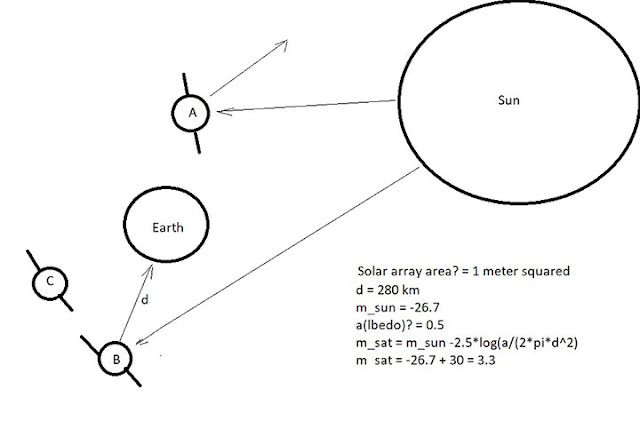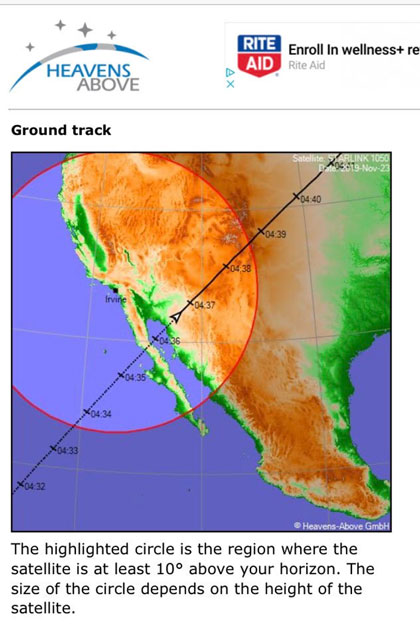Well, tomorrow, Thursday morning, we planned to try again to get some images of the Starlinks satellites, while still in the string of pearls configuration. In the meantime, it is time to check out another lecture in the Distinctive Voices series at the Beckman Center in Irvine.
Tracy Drain, JPL Systems Engineer working on the NASA Psyche Mission told us all about working at JPL and the upcoming mission to study the asteroid Psyche 16.
 |
| Tracy Drain, JPL, at Distinctive Voices lecture on "Psyche" (Source: Palmia Observatory) |
Now, I had not heard of the asteroid Psyche 16 before did want to hear about the mission to visit the asteroid, so I met up with Math Whiz, Dave, and Part time Texan, Jay, for an evening lecture on the topic. To start we should note that Psyche 16 is one of the ten most massive asteroids, which puts it at about 200 km in diameter. It is pretty dim at magnitude 9-12 and I still might want to put it on my observing wish list.
In the meantime, Tracy went on to explain what an asteroid is and why studying them can provide clues to the formation of planets in the solar system. In the slide below, she told how the conditions under which asteroids form can be identified by the types of meteorites that land here on Earth. We find the Chondritic meteorites that form in the out shell of asteroids and the iron meteorites that had to form in the molten core of an asteroid. Pallasite meteorites have a combination of molten rock with embedded inclusions which reveal the conditions under which they form. All of these meteorites help build and verify the theory of asteroid and planet formation.
 | |
|
 | |
|
So, now on Thursday morning we set out early to check out the skies and were disappointed to find that the skies were filled with clouds, just like the forecast predicted. When I first saw that the moon was sort of visible, I thought we might be lucky and the satellites would poke through an opening in the clouds, but that was not to be. Oh well, there is always another day.
 |
| No chance of seeing Starlink satellites in early (5:40 AM) morning view of cloudy moon (Source: Palmia Observatory) |
Well after being clouded out, we had already had our morning coffee and now had some free time to look into a question considered earlier in our quest to get some images of the Starlinks satellites and that is "How does one go about predicting how bright, or what the visible magnitude, of the satellites as they pass overhead"? It seems that it is all do to reflected light from the sun. So, as a back of the envelope calculation, I set up the hand drawn scenario below. We know the sun is very bright and is assigned an apparent magnitude. m, of -26.7. This is the value as seen from Earth. So, let's now just assume that light reflects of the shiny surfaces of the satellite and strikes our eyeballs on Earth. The reflected light spreads out in some non-uniform distribution, but let's assume it just spreads out in a circular wavefront, with a radius of the altitude of the satellites, here assumed at its initial orbit of about 280 km. Then for us Earthbound observers, the visual magnitude is estimated to be about 3.3. Hey that is pretty close to reported values so we might be on the right track!
 |
| Back of the envelope calculation for the visible brightness of a satellite (Source: Palmia Observatory) |
Ok, so there are a lot of assumptions in the back of the envelope calculation. But we can see that while Satellite "B" will be visible, "A" will not and "C" is in Earth's shadow and will not be visible either. Somewhere, we heard that the Starlinks satellites were painted black to help reduce light pollution, but their solar panels will still reflect some light. Painting the satellites black might help with one problem, but must really complicate the satellite thermal management problem because all of that absorbed sunlight energy will complicate the heat removal problem.
Anyway, after being tired out by actually trying to calculate something, it is time to rest up and wake up Friday morning for possible Starlinks observation starting at 4:23 AM. The satellites are predicted to be dimmer, about magnitude 6, because, I suppose, that that group of satellites might have moved into high orbits with using electric propulsion Hall thrusters. Just guessing; we will have to try again.
Well here it is Friday morning, the weather is clear, but I couldn't find any visible satellites. I'm not sure what the reason was. Better luck tomorrow, Saturday, November 23, again early in the morning as identified in these just refreshed predictions from Heavens-above.
 |
| Predicted sky location for the first of the string of Starlink satellites (Source: www.heavens-above.com) |
The rest of the constellation are expected to originate in about the same position. It is interesting to look at the predicted ground track for that satellite and realize that what we might be able to see is actually passing over the Gulf of California. When the last member of this constellation of satellites is visible the ground track will be just about over our observing location. The Earth has rotated by this amount from the time the first satellite is visible till the last satellite.
 | |
|
 |
| String of pearls as seen from Pacific Crest Trail (Source: Part time Texan, Jay) |
Until next time,
Resident Astronomer George
Be sure to check out over 300 other blog posts on similar topics
If you are interested in things astronomical or in astrophysics and cosmology
Check out this blog at www.palmiaobservatory.com

No comments:
Post a Comment